Night-scented gardens
Planting for nocturnal pollinators
Fragrant plants bring a whole new sensory element to landscapes, and night-scented species provide added interest as dusk falls and their scent intensifies. These plants have evolved over time to attract and support nocturnal pollinators, including moths, bats, beetles, and flies. Night-scented plants maximise the reach of their fragrance in the cooler, calmer evening air. Warmer daytime temperatures cause scent molecules to disperse quickly and rise, which makes them less detectable at ground level. However, during the night, air is denser and more stable, and this allows oils released by flowers to linger and spread closer to the ground, where nocturnal pollinators are busy foraging.
Did you know?
The fragrance of some night-scented species is so powerful that it can be detected over 30 metres away!
Night-scented plants often have white or pale flowers that are easy to spot in low light and reflect moonlight, which enhances their visibility after dark. They may not be the most showy plant species during the daytime, but their evening fragrance can transform landscapes. By choosing a mix of night-scented species that flower at different times of the year, you can enjoy fragrance from late spring through to autumn. Combine them with grasses or pale-foliaged plants, such as Pittosporum tenuifolium or Brachyglottis, to enhance their evening glow. They are ideal for flower borders and beds, containers, or along paths and patios. Sheltered positions are preferred, near seating areas or doorways, where their impressive scent can be enjoyed for longer periods of time.
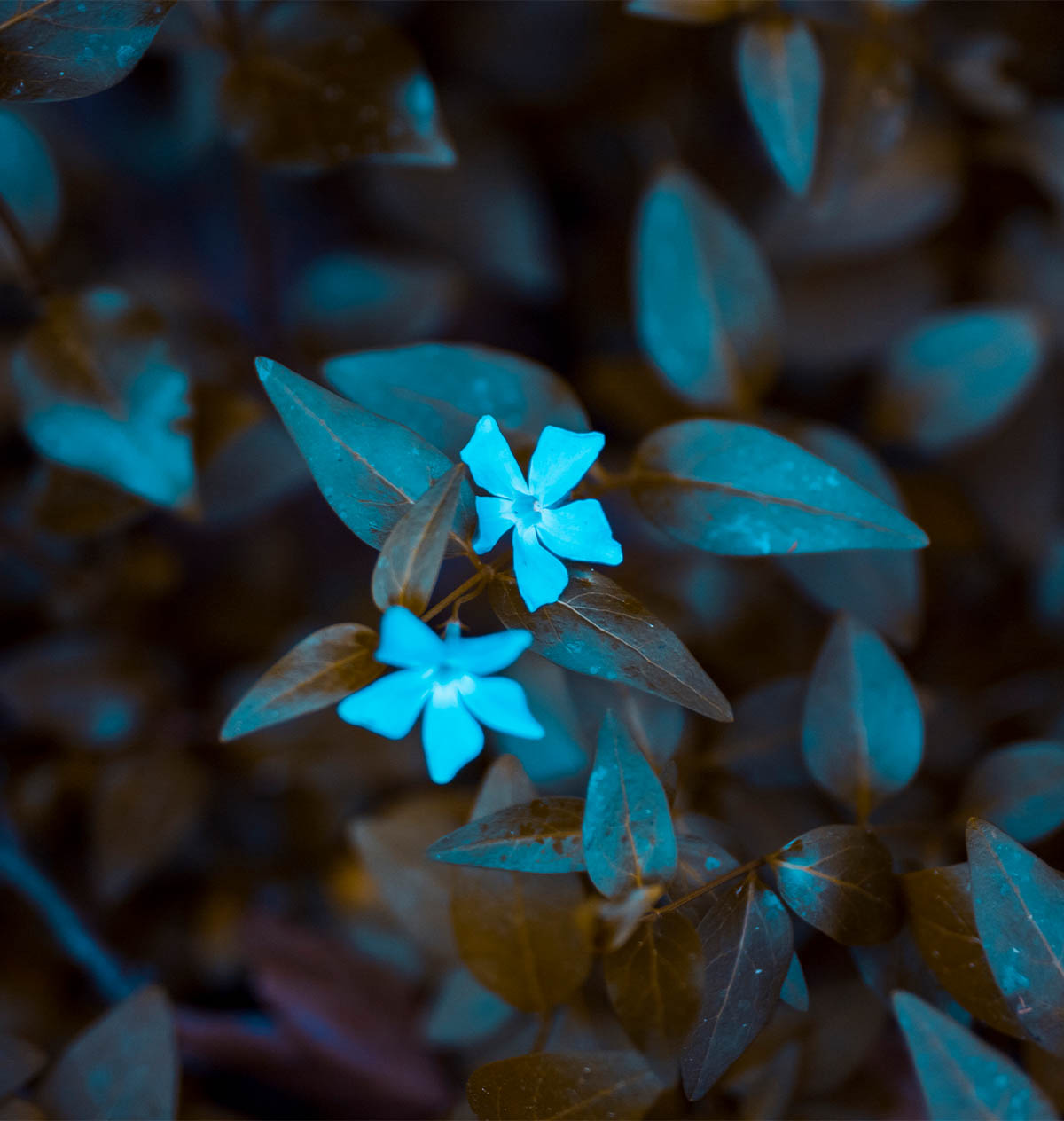
Fun fact:
Night-scented gardens often overlap with “moon gardens”. These are areas that have been planted with pale or silver foliage plants, as these glow in moonlight. Examples of species include Stachys byzantina, Artemisia, and Lavandula angustifolia.
Why use night-scented plants?
Including night-scented plants in your planting plan benefits biodiversity. These plants offer vital support to night-flying insects — many of which are unfortunately in decline. Moths, for example, are often overlooked as pollinators, but play a pivotal role in our ecosystem. Research carried out by the University of Sussex in 2021 shows their efficiency as night-time pollinators is higher than day-flying pollinators, including bees. They found that 83% of insect visits to bramble flowers were made in the daytime, and although moths visited less during the shorter summer nights, totalling around 15% of visits, they pollinated the flowers quicker.
There are around 2,500 moth species in the UK, including the striking elephant hawk-moth, silver Y, and angle shades. Since around 1900, 51 moth species have become extinct. This is mainly due to habitat loss and degradation, climate change, and pesticide use. Without intervention, more moth species may follow. Moth numbers are particularly low in southern Britain, where they are down by around 40%.
Both moths and their caterpillars are vital food sources for other species of wildlife, such as birds, bats, amphibians, and small mammals. Moth caterpillars are essential in the feeding of young chicks, in species including blackbirds, wrens, and robins. A decline in the number of moths could significantly impact these wildlife species.
Including plenty of nectar-rich plants and night-scented flowers is a great way to encourage moths to your landscape, in addition to other wildlife. Open flowers with many florets offer nectar to short-tongued insects, such as flies. Pale blue and white flowers are especially valuable, as they are easier to spot in low light and more likely to attract night-flying pollinators.
Nocturnal pollinators
Cestrum nocturnum
An evergreen shrub that grows to around 4m in height. Its arching stems bear ovate leaves and clusters of creamy-white, green-tinted tubular flowers from May to November. Its flowers give off an intense, musky fragrance at night. Cestrum nocturnum requires a sheltered sunny position in well-drained soil, and needs protection during the winter months.
Jasminum officinale
A vigorous, deciduous climber that is prized for its profusion of sweetly scented, star-shaped white flowers from summer to early autumn. Has mid-green, divided leaves and reaches up to 12m in height. Jasminum officinale has an impressive evening fragrance and thrives in a sunny to partially shaded sheltered position. Works well in a cottage or informal garden.
Lonicera periclymenum
A UK native, vigorous, shrubby climber that is valued for its highly scented, tubular, white, purple flushed flowers from July to August. Its green foliage is oval-shaped. Reaches up to 7m in height. Produces glossy, red berries in autumn, which are loved by birds. Thrives in full sun or partial shade, and works well for covering fences or trellises. Its intense evening fragrance attracts nocturnal pollinators.
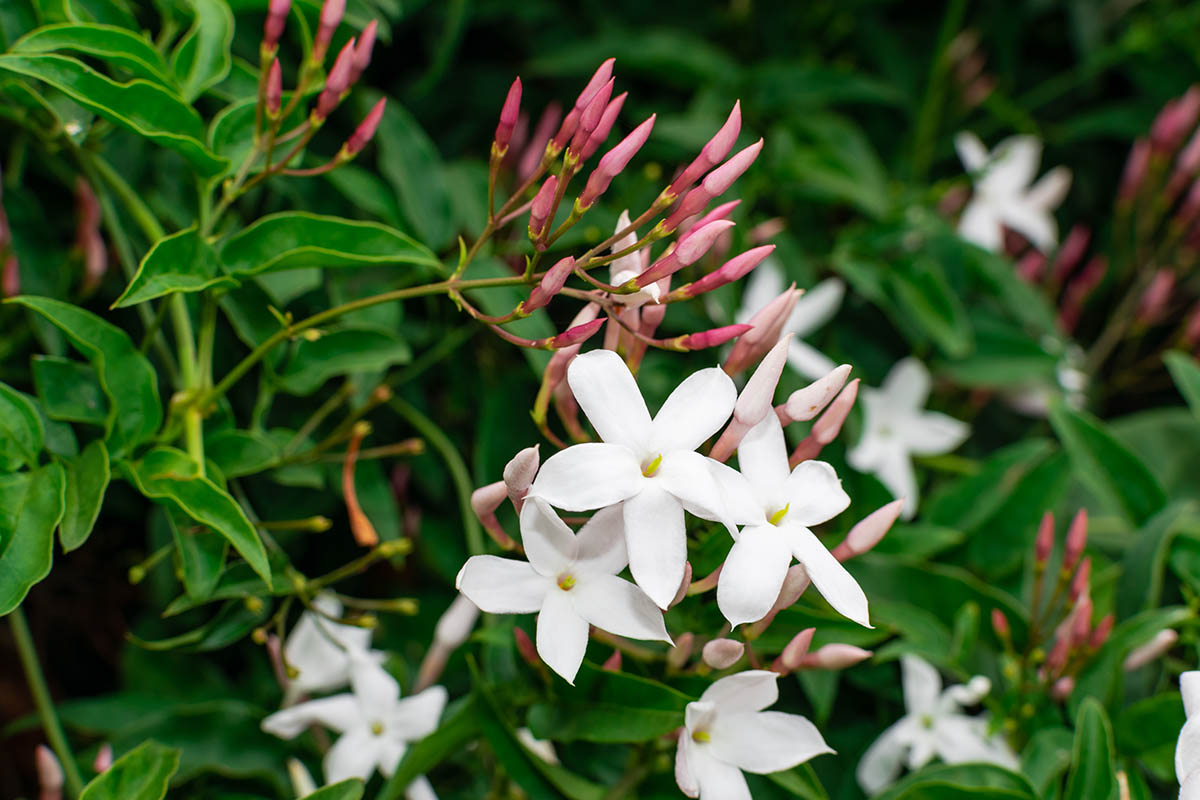
Jasminum officinale

Lonicera periclymenum
Philadelphus ‘Belle Étoile’
A compact deciduous shrub that reaches around 1.2m in height. It has arching stems that bear ovate green leaves and highly scented, cup-shaped, single white flowers, with lilac centres. Thrives in full sun to partial shade, in exposed or sheltered positions. Philadelphus ‘Belle Étoile’ works well in flower borders and beds, and is a low maintenance planting option.
Phlox paniculata
A herbaceous perennial with a bushy habit, that grows to around 1.2m in height. Its stems bear lance-shaped, slightly toothed foliage, and clusters of purple, pink, or white flowers from around July to September. Phlox paniculata thrives in full sun to partial shade, in moist, well-drained soil. Ideal for cottage and wildlife gardens.
Trachelospermum jasminoides
An evergreen climber but glossy, dark green leaves and masses of star-shaped, white flowers that release a jasmine-like fragrance in the summer months. Commonly known as star jasmine, Trachelospermum jasminoides has dark green, oval-shaped foliage that transitions to bronze-red in winter, providing year-round interest. Thrives in a sheltered position in full sun or partial shade, in well-drained soil. Grows to around 9m in height.
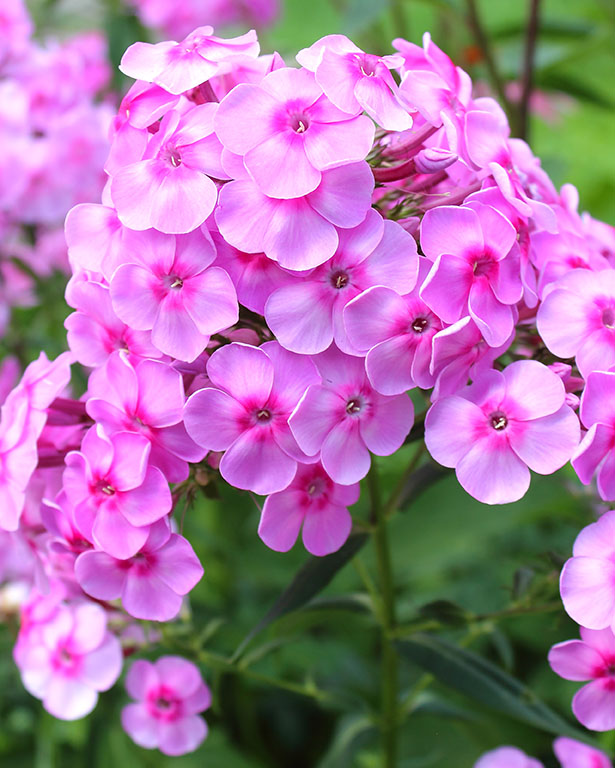
Phlox paniculata
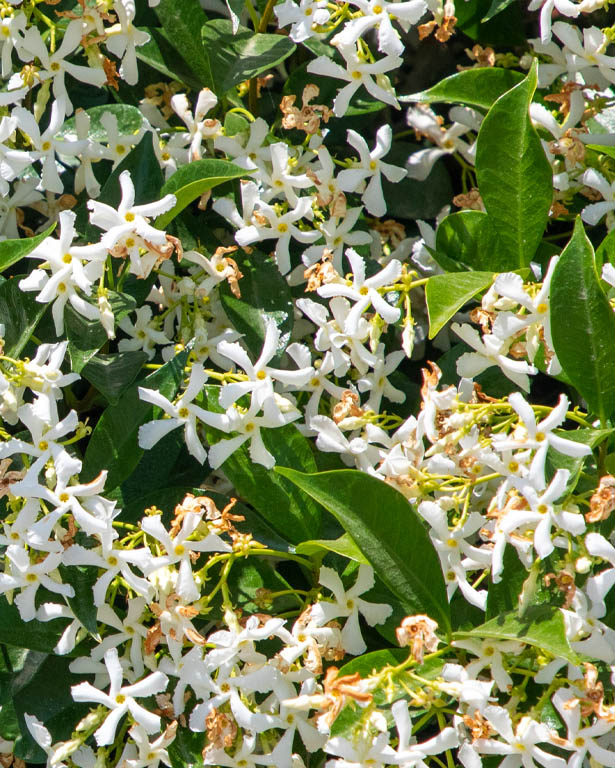
Trachelospermum jasminoides
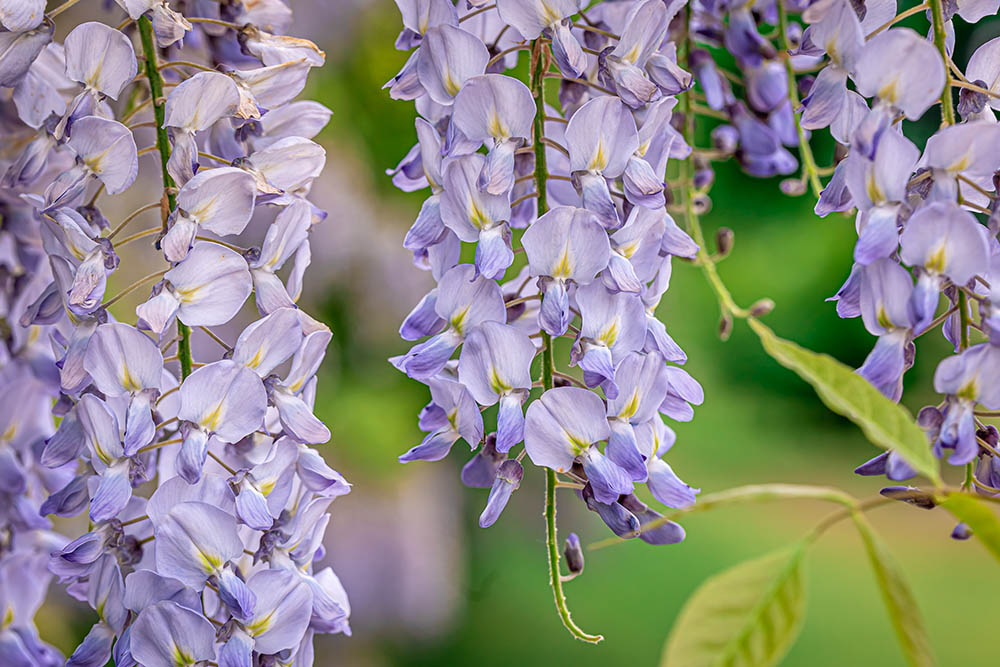
Wisteria sinensis
Viburnum × burkwoodii
A large evergreen or semi-evergreen shrub that grows to around 3m in height. Boasts domed clusters of highly fragrant white flowers that open from pink buds in April and May. Its foliage is dark green and glossy, and the flowers are followed by red fruits. Viburnum × burkwoodii thrives in full sun to partial shade, and prefers a sheltered position. Great for cottage and informal gardens.
Wisteria sinensis
Wisteria sinensis is a vigorous, deciduous climber with twining stems that bear masses of fragrant, lilac, pea-like flowers from late spring to summer. Has dark green pinnate leaves. Looks fantastic when trained up a wall or sturdy structure. Wisteria sinensis is highly fragrant, and this becomes more noticeable as the air cools in the evening. Thrives in full sun in moist, well-drained soil.
Find out more about planting for pollinators by heading to our planting for biodiversity blog.
If you would like more information on night-scented plants we grow and sell, get in touch with the G Team.

